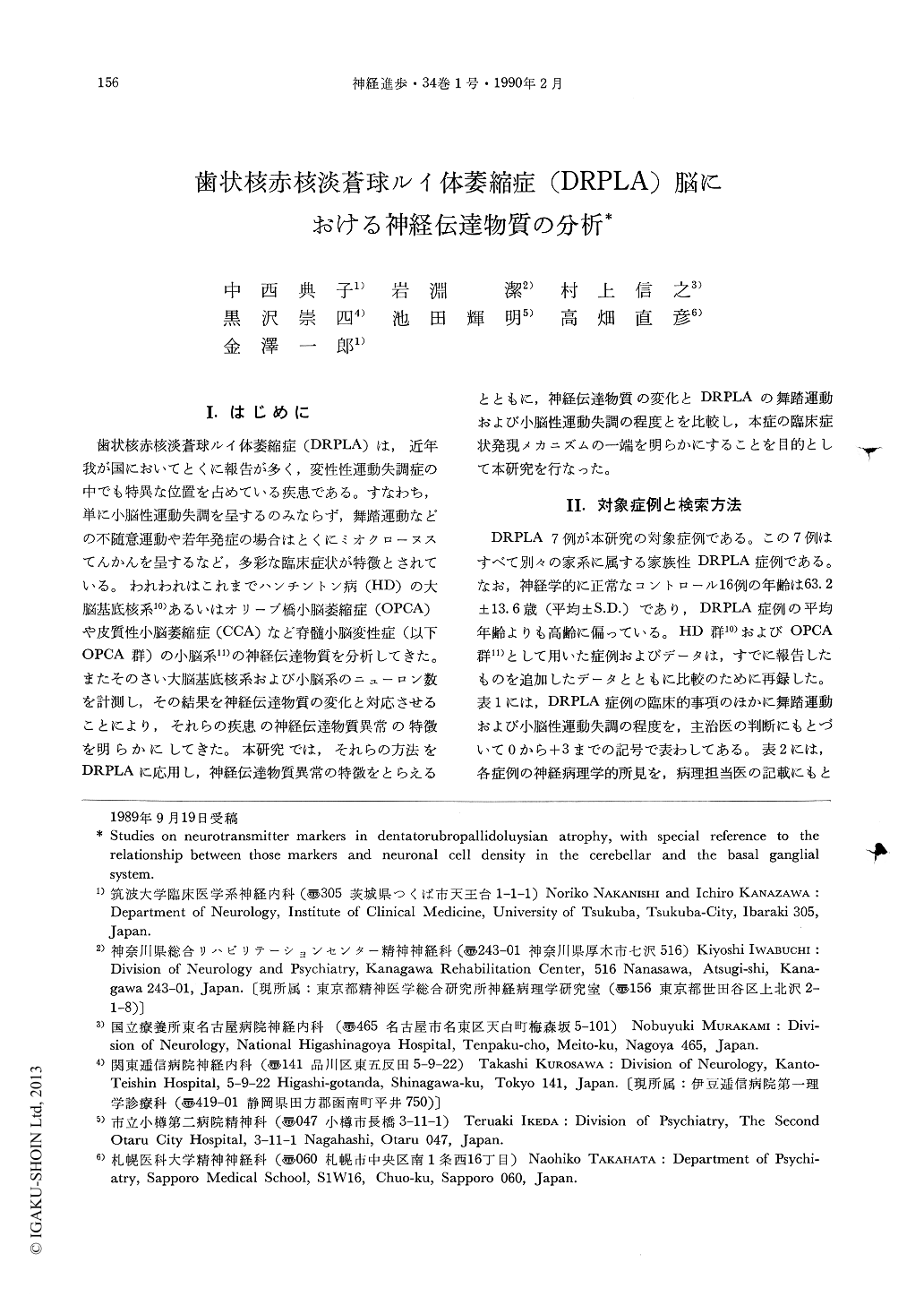Japanese
English
- 有料閲覧
- Abstract 文献概要
- 1ページ目 Look Inside
I.はじめに
歯状核赤核淡蒼球ルイ体萎縮症(DRPLA)は,近年我が国においてとくに報告が多く,変性性運動失調症の中でも特異な位置を占めている疾患である。すなわち,単に小脳性運動失調を呈するのみならず,舞踏運動などの不随意運動や若年発症の場合はとくにミオクローヌスてんかんを呈するなど,多彩な臨床症状が特徴とされている。われわれはこれまでハンチントン病(HD)の大脳基底核系10)あるいはオリーブ橋小脳萎縮症(OPCA)や皮質性小脳萎縮症(CCA)など脊髄小脳変性症(以下OPCA群)の小脳系11)の神経伝達物質を分析してきた。またそのさい大脳基底核系および小脳系のニューロン数を計測し,その結果を神経伝達物質の変化と対応させることにより,それらの疾患の神経伝達物質異常の特徴を明らかにしてきた。本研究では,それらの方法をDRPLAに応用し,神経伝達物質異常の特徴をとらえるとともに,神経伝達物質の変化とDRPLAの舞踏運動および小脳性運動失調の程度とを比較し,本症の臨床症状発現メカニズムの一端を明らかにすることを目的として本研究を行なった。
Dentatorubropallidoluysian atrophy (DRPLA) is a unique neurodegenerative “ataxic” and “choreic” disorder which is relatively popular in Japan. We have investigated changes of neurotransmitter markers in the cerebellar and the basal ganglial systems of 7 autopsied cases of DRPLA.
In the cerebellar system, glutamate concentration in the cerebellar cortex was almost normal in 7 cases of DRPLA in spite of the decreased number of granular cells in 2 cases. GABA levels in the cerebellar cortex were relatively higher than those in the normal controls.

Copyright © 1990, Igaku-Shoin Ltd. All rights reserved.


